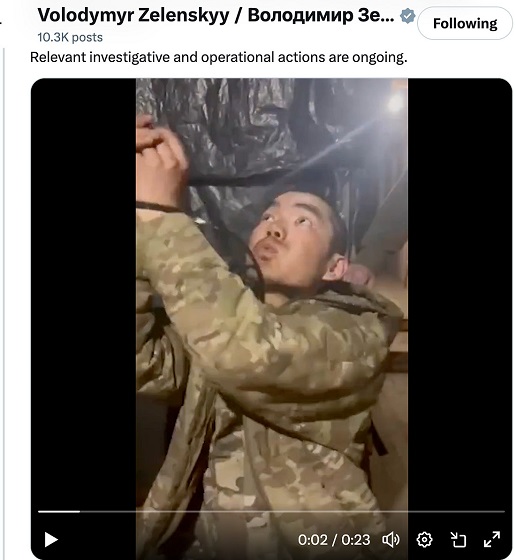Alberta
New surveillance teams led by the Alberta Sheriffs working with local police in rural communities

More boots on the ground to fight rural crime
Rural crime continues to be a top concern among residents and businesses in rural Alberta, which is why Alberta’s government remains committed to addressing it through enhanced surveillance and other crime reduction initiatives. Alberta’s government invested $4.3 million for the Alberta Sheriffs to put more boots on the ground. This investment supported the establishment of two plainclothes teams – one in northern Alberta and one in southern Alberta – to support police in carrying out surveillance on criminal targets in rural areas.
Both teams are now fully staffed and operational, ready to fight crime in rural areas across Alberta. These rural surveillance teams will work to prevent crime, monitor agricultural theft and work in collaboration with local law enforcement to share intelligence and resources to keep Albertans and their property safe and secure.
“Criminals and organized crime are not welcome in Alberta. Full stop. The addition of two new surveillance teams will further support our law enforcement partners in stamping out criminal activity in Alberta’s rural areas. This is about supporting local investigations to address local crime in our smaller communities. Together, both teams will form another key component of Alberta’s efforts to combat crime and ensure Albertans feel safe at home and in their communities, regardless of where they live.”
The Alberta Sheriffs have an existing surveillance unit that is part of the Alberta Law Enforcement Response Teams (ALERT) and focused mainly on serious and organized crime investigations. The new surveillance teams will fill a gap by helping rural RCMP detachments with local investigations.
“Through their specialized knowledge, training and experience, Alberta’s new surveillance teams are providing another important mechanism in the fight against crime in Alberta’s rural communities. Working in close collaboration with the RCMP and other policing agencies, their efforts will play a key role in gathering evidence and information that will help disrupt crime throughout the province.”
“This announcement by the Alberta government and Minister Ellis is a positive step forward for the residents of Alberta, especially in rural areas. Targeting known criminals is a very effective way to reduce the level of crime taking place and will greatly assist the RCMP who have a vast area to police.”
“We are happy to hear about increased resources being allocated to assist our communities. Addressing rural crime is one of the top priorities of the Alberta RCMP, and our partners at the Alberta Sheriffs already play a vital role in keeping Albertans safe. The creation of these new surveillance teams will help augment our ongoing crime reduction strategies in Alberta communities, and we look forward to working with them going forward.”
The new surveillance teams are part of a suite of measures to expand the role of the Alberta Sheriffs and make Alberta communities safer. Other actions include the expansion of the Safer Communities and Neighbourhoods (SCAN) unit – which uses legal sanctions and court orders to target problem properties where illegal activities are taking place – and the expansion of the RAPID Response initiative with funding for the Sheriff Highway Patrol to train and equip members to assist the RCMP with emergencies and high-priority calls.
Related news
- Fighting rural crime (March 24, 2023)
Multimedia
Alberta
Alberta takes big step towards shorter wait times and higher quality health care

From the Fraser Institute
On Monday, the Smith government announced that beginning next year it will change the way it funds surgeries in Alberta. This is a big step towards unlocking the ability of Alberta’s health-care system to provide more, better and faster services for the same or possibly fewer dollars.
To understand the significance of this change, you must understand the consequences of the current (and outdated) approach.
Currently, the Alberta government pays a lump sum of money to hospitals each year. Consequently, hospitals perceive patients as a drain on their budgets. From the hospital’s perspective, there’s little financial incentive to serve more patients, operate more efficiently and provide superior quality services.
Consider what would happen if your local grocery store received a giant bag of money each year to feed people. The number of items would quickly decline to whatever was most convenient for the store to provide. (Have a favourite cereal? Too bad.) Store hours would become less convenient for customers, alongside a general decline in overall service. This type of grocery store, like an Alberta hospital, is actually financially better off (that is, it saves money) if you go elsewhere.
The Smith government plans to flip this entire system on its head, to the benefit of patients and taxpayers. Instead of handing out bags of money each year to providers, the new system—known as “activity-based funding”—will pay health-care providers for each patient they treat, based on the patient’s particular condition and important factors that may add complexity or cost to their care.
This turns patients from a drain on budgets into a source of additional revenue. The result, as has been demonstrated in other universal health-care systems worldwide, is more services delivered using existing health-care infrastructure, lower wait times, improved quality of care, improved access to medical technologies, and less waste.
In other words, Albertans will receive far better value from their health-care system, which is currently among the most expensive in the world. And relief can’t come soon enough—for example, last year in Alberta the median wait time for orthopedic surgeries including hip and knee replacements was 66.8 weeks.
The naysayers argue this approach will undermine the province’s universal system and hurt patients. But by allowing a spectrum of providers to compete for the delivery of quality care, Alberta will follow the lead of other more successful universal health-care systems in countries such as Australia, Germany, the Netherlands and Switzerland and create greater accountability for hospitals and other health-care providers. Taxpayers will get a much better picture of what they’re paying for and how much they pay.
Again, Alberta is not exploring an untested policy. Almost every other developed country with universal health care uses some form of “activity-based funding” for hospital and surgical care. And remember, we already spend more on health care than our counterparts in nearly all of these countries yet endure longer wait times and poorer access to services generally, in part because of how we pay for surgical care.
While the devil is always in the details, and while it’s still possible for the Alberta government to get this wrong, Monday’s announcement is a big step in the right direction. A funding model that puts patients first will get Albertans more of the high-quality health care they already pay for in a timelier fashion. And provide to other provinces an example of bold health-care reform.
Alberta
Alberta’s embrace of activity-based funding is great news for patients

 From the Montreal Economic Institute
From the Montreal Economic Institute
Alberta’s move to fund acute care services through activity-based funding follows best practices internationally, points out an MEI researcher following an announcement made by Premier Danielle Smith earlier today.
“For too long, the way hospitals were funded in Alberta incentivized treating fewer patients, contributing to our long wait times,” explains Krystle Wittevrongel, director of research at the MEI. “International experience has shown that, with the proper funding models in place, health systems become more efficient to the benefit of patients.”
Currently, Alberta’s hospitals are financed under a system called “global budgeting.” This involves allocating a pre-set amount of funding to pay for a specific number of services based on previous years’ budgets.
Under the government’s newly proposed funding system, hospitals receive a fixed payment for each treatment delivered.
An Economic Note published by the MEI last year showed that Quebec’s gradual adoption of activity-based funding led to higher productivity and lower costs in the province’s health system.
Notably, the province observed that the per-procedure cost of MRIs fell by four per cent as the number of procedures performed increased by 22 per cent.
In the radiology and oncology sector, it observed productivity increases of 26 per cent while procedure costs decreased by seven per cent.
“Being able to perform more surgeries, at lower costs, and within shorter timelines is exactly what Alberta’s patients need, and Premier Smith understands that,” continued Mrs. Wittevrongel. “Today’s announcement is a good first step, and we look forward to seeing a successful roll-out once appropriate funding levels per procedure are set.”
The governments expects to roll-out this new funding model for select procedures starting in 2026.
* * *
The MEI is an independent public policy think tank with offices in Montreal, Ottawa, and Calgary. Through its publications, media appearances, and advisory services to policymakers, the MEI stimulates public policy debate and reforms based on sound economics and entrepreneurship.
-

 conflict2 days ago
conflict2 days agoZelensky Alleges Chinese Nationals Fighting for Russia, Calls for Global Response
-

 2025 Federal Election2 days ago
2025 Federal Election2 days agoAn In-Depth Campaign Trail “Interview” With Pierre Poilievre
-

 2025 Federal Election2 days ago
2025 Federal Election2 days agoHarper Endorses Poilievre at Historic Edmonton Rally: “This Crisis Was Made in Canada”
-

 John Stossel1 day ago
John Stossel1 day agoGovernment Gambling Hypocrisy: Bad Odds and No Competition
-

 Alberta1 day ago
Alberta1 day agoAlberta’s embrace of activity-based funding is great news for patients
-

 2025 Federal Election2 days ago
2025 Federal Election2 days agoWATCH: Massive Crowd for Historic Edmonton Poilievre Rally
-

 2025 Federal Election17 hours ago
2025 Federal Election17 hours agoCommunist China helped boost Mark Carney’s image on social media, election watchdog reports
-

 2025 Federal Election2 days ago
2025 Federal Election2 days agoMark Carney’s radical left-wing, globalist record proves he is Justin Trudeau 2.0










